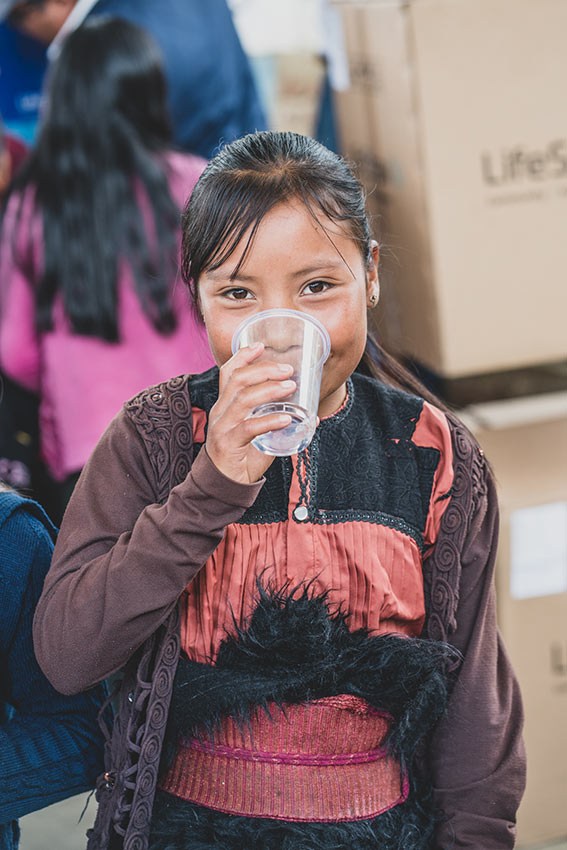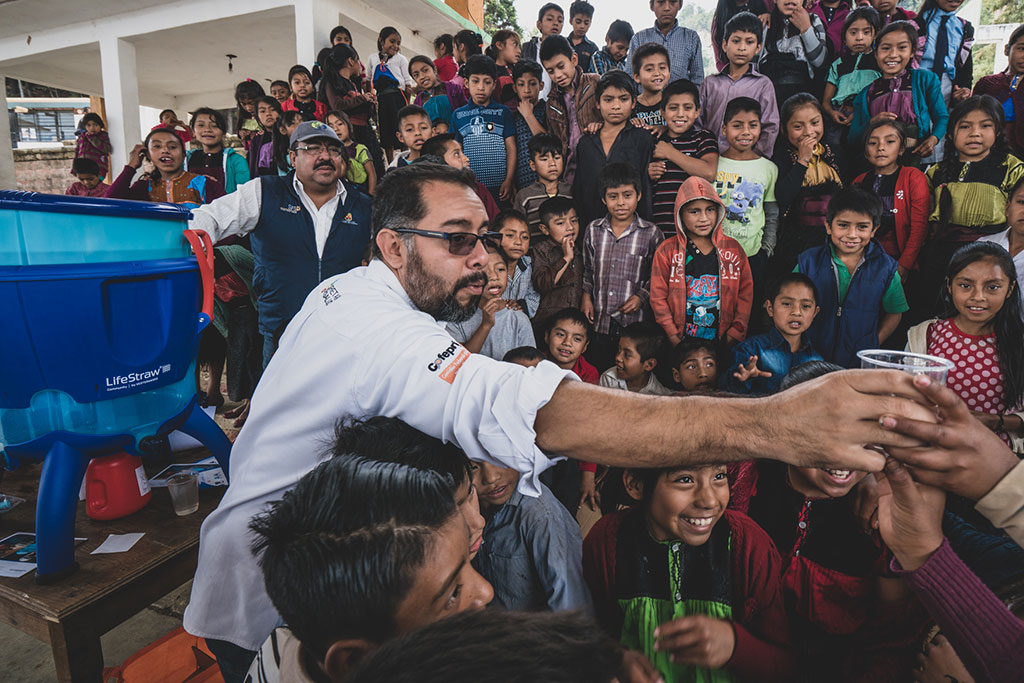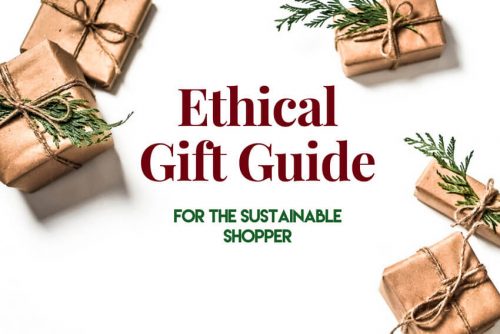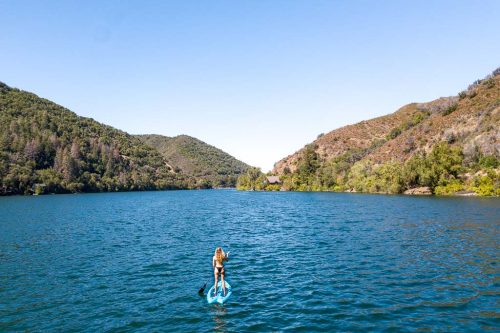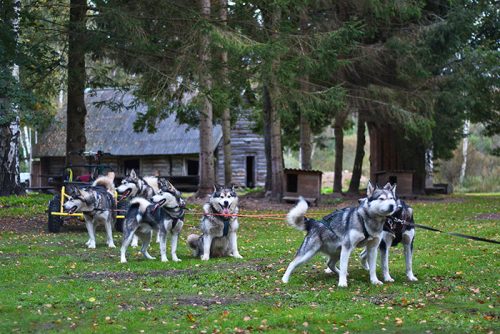This trip and article was in collaboration with LifeStraw, a company that we’ve always supported and purchased products from, years before we worked with them. All opinions and thoughts are our own.
Growing up in the United States, where getting clean water was as easy as going to the kitchen, I didn’t think a lot about the issue of safe water. Water came from the tap, into a glass and then into my mouth. It wasn’t until I started traveling that I realized how privileged I was, just for the simple fact that I had access to safe water. Around the world, people struggle with access to this most basic human need. I didn’t quite grasp the magnitude of this issue until I started reading some pretty scary statistics.

Let me throw some numbers at you:
- 844 million people around the world don’t have access to safe drinking water
- 31% of schools around the world don’t have access to safe water
- 443 million school days are lost each year due to water-related diseases
According to the World Health Organization, nearly 1 out of every 5 deaths under the age of 5 worldwide is due to a water-related disease. That last statistic is especially heartbreaking considering how preventable a lot of these diseases are, if only the child had access to safe drinking water.
LifeStraw Partnership
It’s pretty apparent that safe drinking water is crucial for the health and education of children around the world. That’s why we’re SO excited to partner with LifeStraw, a water filtration company that is working to give developing communities access to safe water.
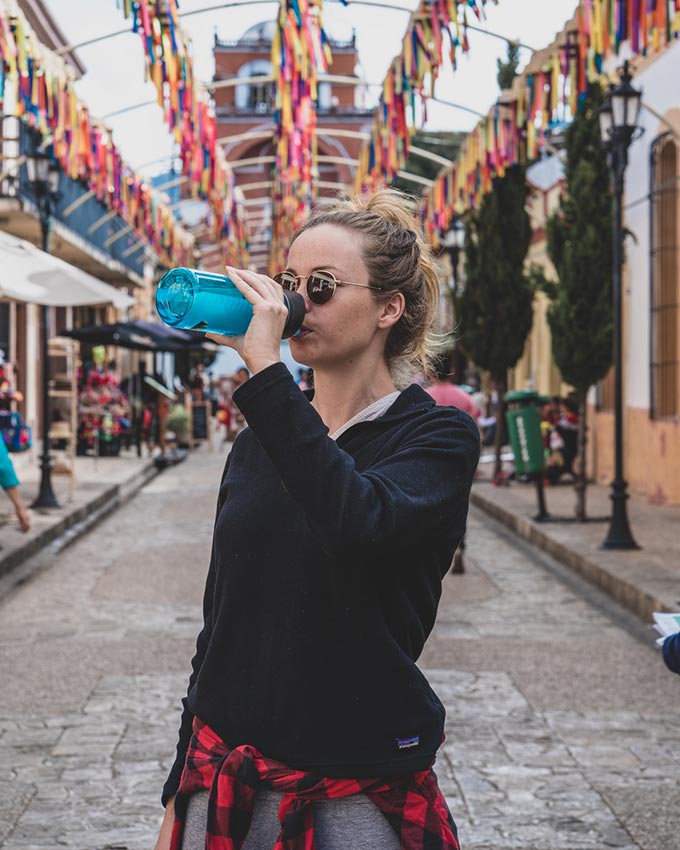
For every product sold, they provide one child with safe drinking water for an entire school year. Through their Doing Good program they’ve installed their LifeStraw Community filters in schools in Kenya and are currently expanding their program. With a handful of other bloggers and photographers, we were lucky enough to be invited to document their inaugural school visits in Chiapas, Mexico! The plan was to spend the first half of our trip visiting schools and the second half putting the personal filters to the test while traveling around the region.
We started the week in San Cristobal de las Casas, a city that Jules and I know pretty well. We stayed there for 2 months in 2013, posting up in a one room apartment near the historic city center. At that point our blog was just a baby, and visiting the city again on such a dream work trip really cemented for us just how far we’ve come. After all, our partnership with LifeStraw fit Don’t Forget To Move to a T; perfect mixture of adventure travel and responsible tourism.
LifeStraw in Mexico
Our first day in San Cristobal was spent learning about the filters, their function and how to set them up. Although we were eager to start the school visits, this introduction was very insightful and showed us that LifeStraw takes this process very seriously. The small conference room was filled with the local and international LifeStraw team, members of Chiapas Department of Health, filter distributors and a small group of us bloggers, photographers and videographers.

LifeStraw explained why safe drinking water is such an important issue in this area. Unlike the north of Mexico, which is dry, the south of Mexico has plenty of water. Unfortunately more than 90% of that fresh water is contaminated. Back home it’s common for a small amount of chlorine to be put into drinking water to kill contaminants, but the local indigenous population here is against this because of their traditions. LifeStraw is a great solution for these communities, because most of the water contamination is microbiological (ie. from bacteria and viruses) as opposed to chemical, which is exactly what LifeStraw can filter out!
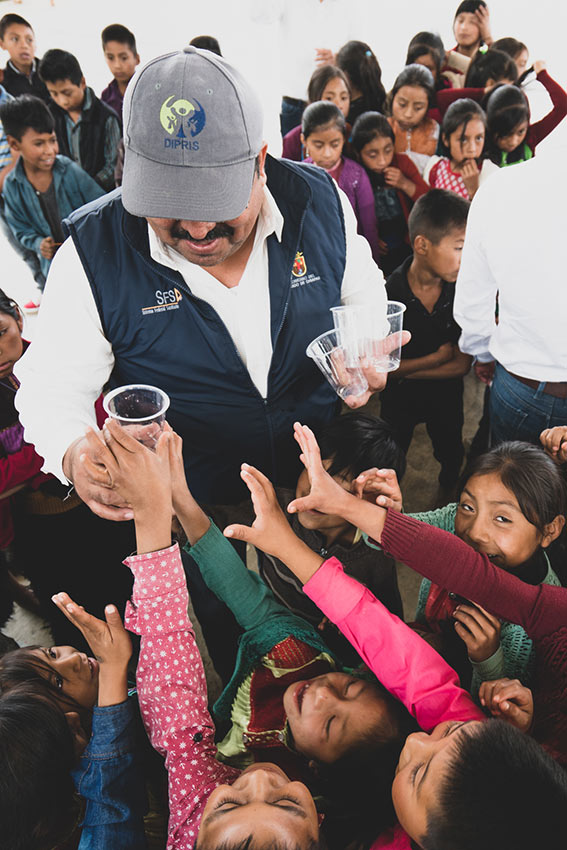
Coming from a non-profit background, Jules and I can be pretty critical of any type of giving back program. There’s a current trend for companies to add some sort of “giving back” angle to their business model. Whether their intention is to actually make a positive impact or just sell more product, it can be hard to tell. With LifeStraw, there’s absolutely no question, their first priority is to bring safe drinking water to communities around the world!
One of the things that solidified our trust in LifeStraw is the company’s history. To give you a bit of background, LifeStraw started from their parent company, Vestergaard. Vestergaard developed a technology to filter out Guinea worm larvae from water. From over 3 million cases in the 1980s, today, the LifeStraw filter has helped reduced cases of Guinea worm to only 25. In the next few years, this will be only the second disease eradicated in the world, and the first without a vaccine. That’s pretty darn impressive.
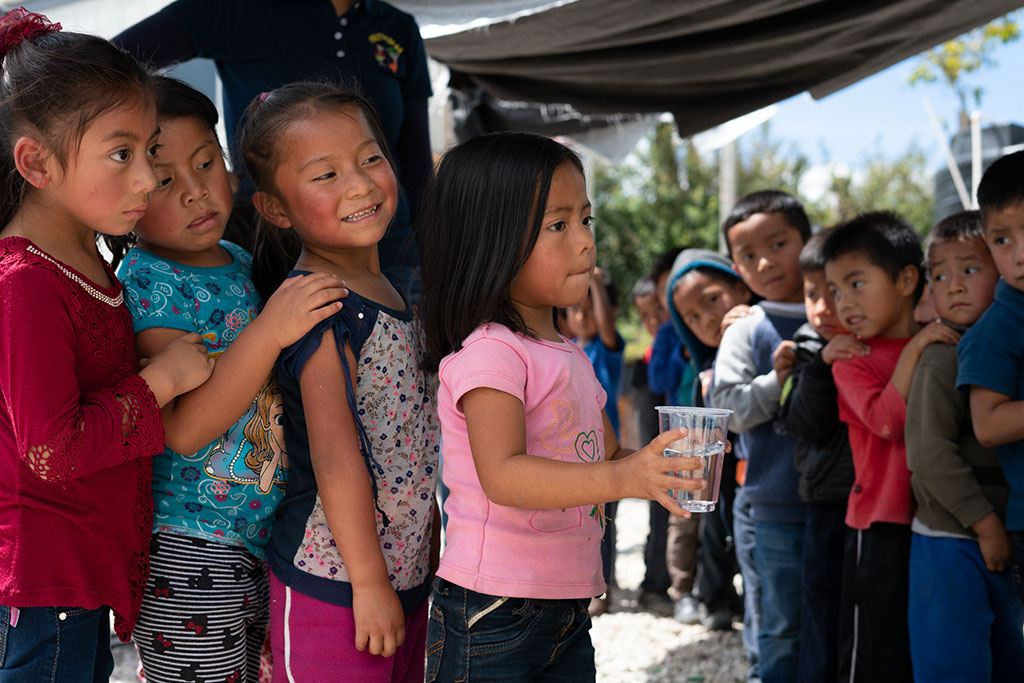
So to say that LifeStraw knows what they’re doing in regard to public health is an understatement. By partnering with the local government, LifeStraw also insures the longevity and sustainability of the program. With locals partners it means there are people on the ground for maintenance in case anything breaks. It also means that the local LifeStraw team can work directly with the Department of Health to install new filters around the region. No need for international staff to fly in, no need for voluntourists to come help out. It’s simply the community helping the community.
And that’s what we really loved about this trip. There was no BS. No one from LifeStraw inflating our egos or making us international bloggers feel like we were being flown in to save the day. Our role was simply to document and share with our audiences to spread the word. The real work was done by the local staff of LifeStraw, the government officials and the staff and volunteers at each school.
LifeStraw School Visits
Not that we didn’t stick out like sore thumbs as two fair skinned blondies. The moment we stepped out of the van we were swarmed by dozens of children, all dressed in traditional Mayan clothing. They climbed on Jules and examined my hair, asking me if it was “pintada” (painted). I think they were pretty disappointed when I told them yes, it’s dyed! Despite their enthusiastic and inquisitive questions we tried our best to redirect their attention to the LifeStraw presentation given by Rodrigo, Julio and Jorge – the local staff members of our group.
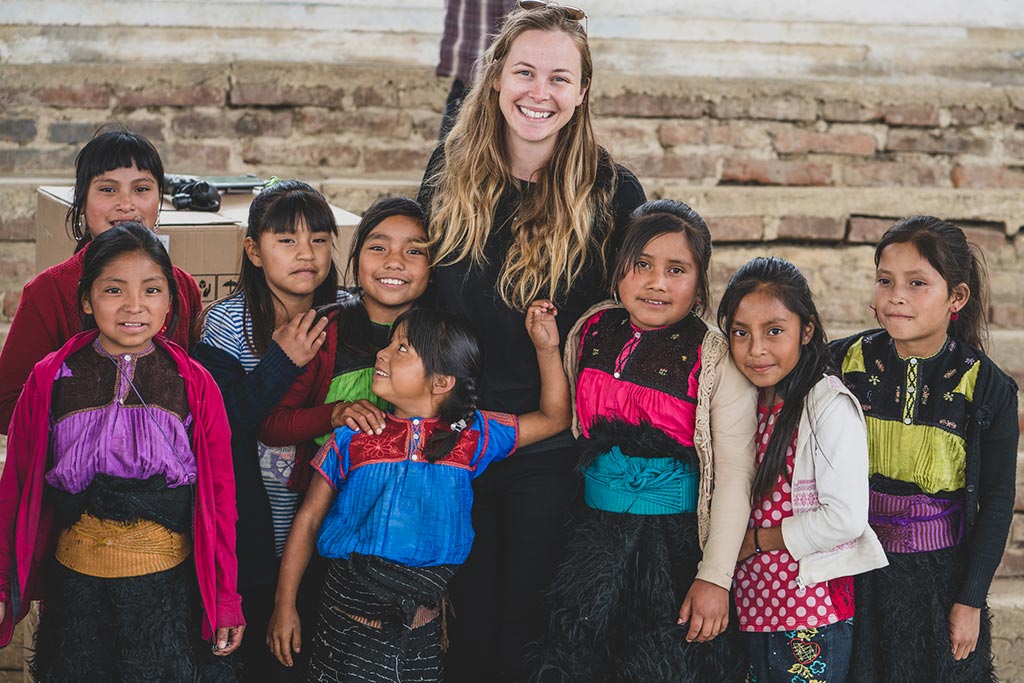
One of the teachers stepped in to translate from Spanish to the local Tzotzil language. The presenters did an incredible job teaching the kids about the importance of safe water and quizzing them with hygiene questions like “how long should you wash your hands for?” One kid shouted out “2 hours?!” I like your enthusiasm kid, but that’s a little overkill.
The children were trained on how the LifeStraw Community water filter works and two kids were chosen to be “Guardian Angels,” helpers to maintain the filter throughout the school year. Then they all lined up, not quite one by one (let’s be honest, it was a mad rush) to taste a glass of the safe, filtered water. The response was incredible. They were so excited to have water that tasted fresh.
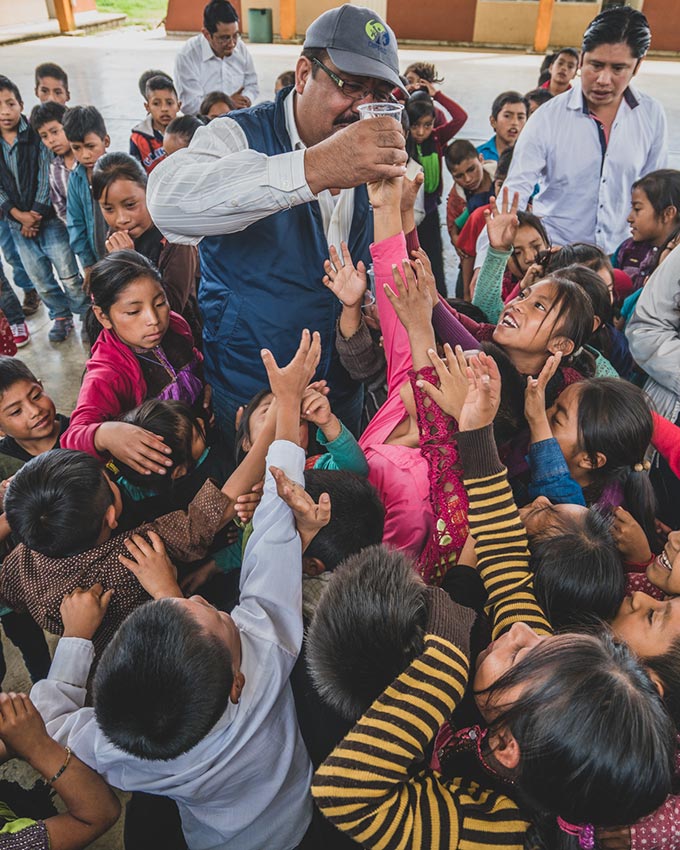
And the great part is, LifeStraw doesn’t just drop off filters and hope for the best. The team on the ground schedules regular visits to the schools to ensure everything is working well and that the filters are being used correctly. Within 2 days, the 3 teams on the project reached 16 schools and provided over 2,500 school children with access to clean drinking water.

Reality of Impact
While those are some pretty incredible numbers, it can be hard to really understand the impact on the ground. It wasn’t until our visit to the last school that it really hit me. They had just finished the presentation and the kids were gathering their backpacks to head home for the day. One of the members of our team pulled us aside to show us something.
He held up a cup of unfiltered water from the tap, where the kids normally get their drinking water. Placing the clear cup on the table, we were able to look down and see two tiny squiggles moving around in the water. It took me a second to realize these were living organisms and not my eyes playing tricks on me. Julio explained that these were mosquito larvae and it wasn’t surprising to see them considering the water source was a stagnant underground container.

Although it’s unlikely those larvae wouldn’t cause harm if ingested, mosquito infested water can be a sign of far more harmful organisms like parasites. This shocking visual was a reminder that the project isn’t just some feel good service project, it’s a crucial program for public health.
And it doesn’t stop there. Better public health can lead to higher graduation, especially for girls who are often tasked with staying home from school to take care of sick siblings. Providing access to safe drinking water can have a snowball effect on the community. Better health means more school days for children and more work days for adults, which means a better educated and more economically prosperous community. Not to sound cheesy, but these filters do more than just give safe water, they give people a chance to live healthy, happy lives.
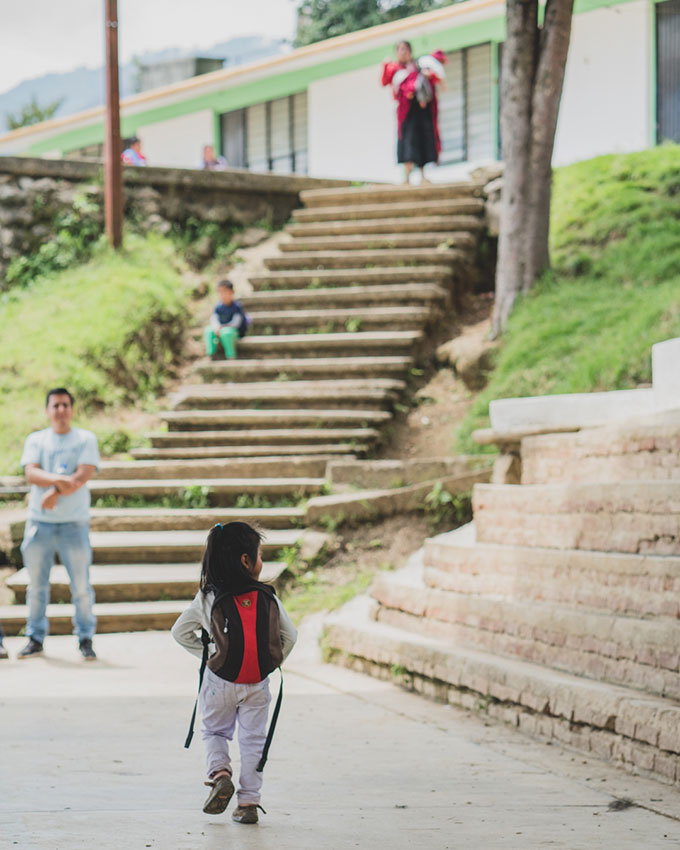
What Can We Do?
So now that you’ve seen what a HUGE impact LifeStraw is having in Mexico and around the world, I bet you want to know how you can help! If you’ve ever felt a calling to help out abroad, this is your chance! Here are some actionable things you can do to spread the word and support the mission:
o Purchase LifeStraw products, so you can help give one child, one school year of safe drinking water! Shop LifeStraw on Amazon or on their site directly.
o Follow LifeStraw social media or sign up for their email list at Lifestraw.com to stay up to date with their progress.
o Like, forward, share the posts to spread the message to friends and family.
o Donate to their 501-c3 Safe Water Fund.
